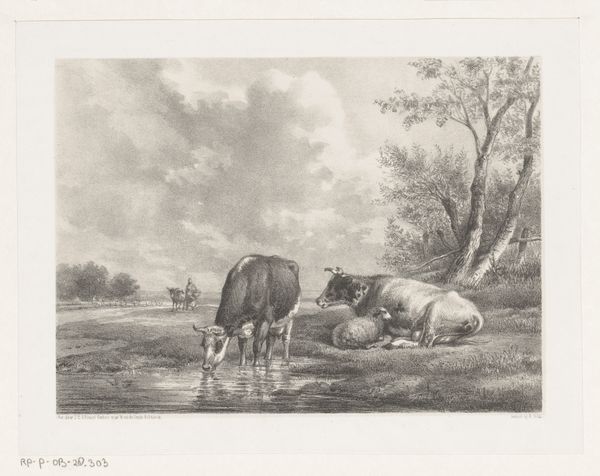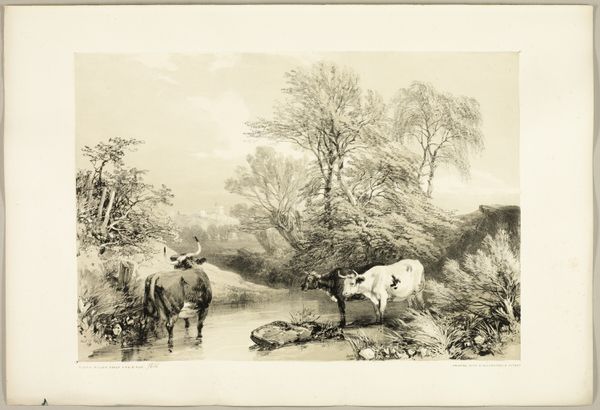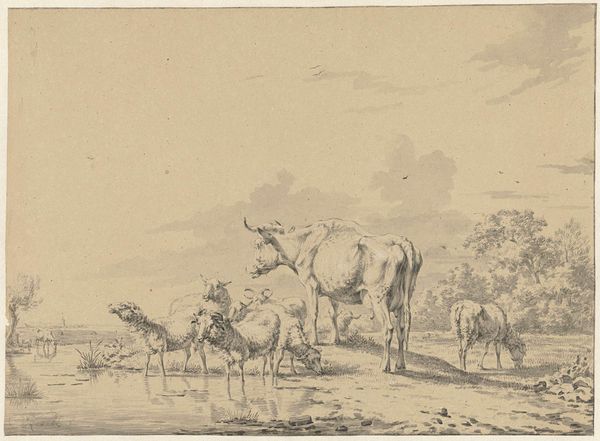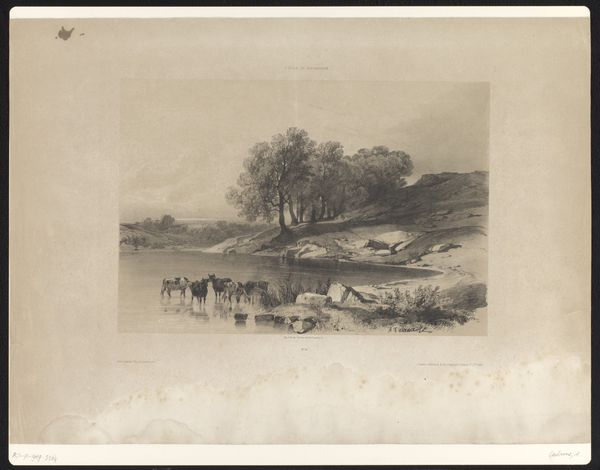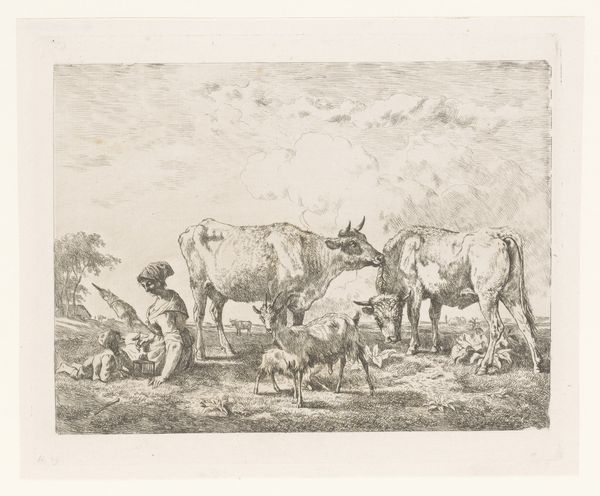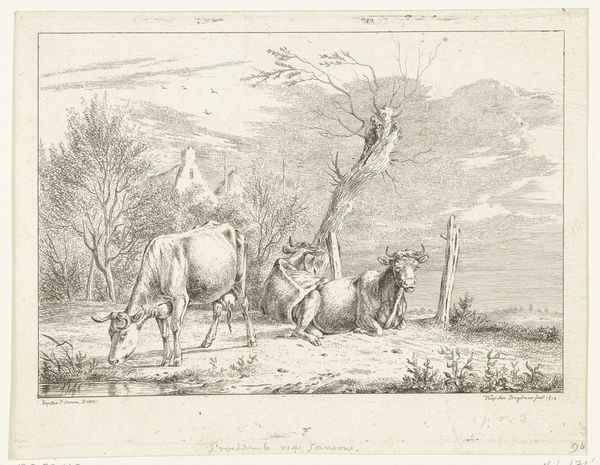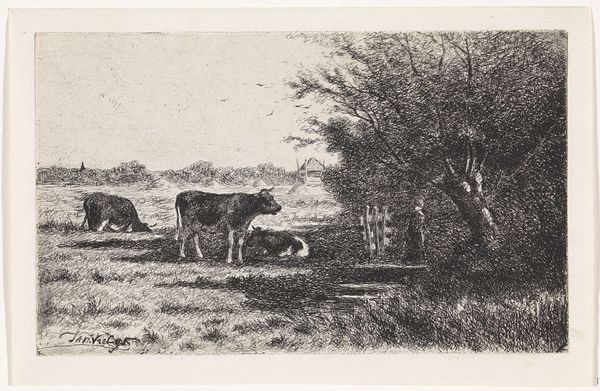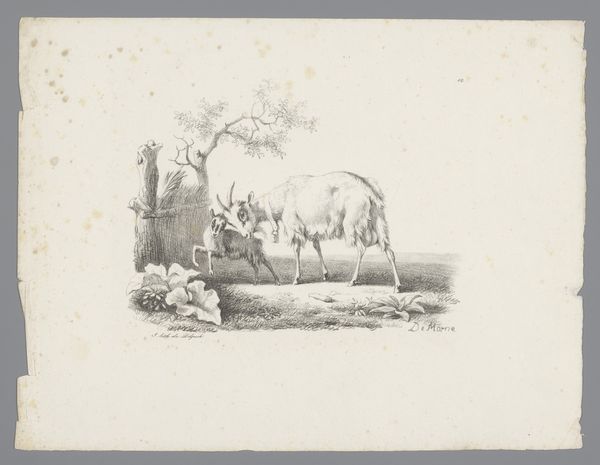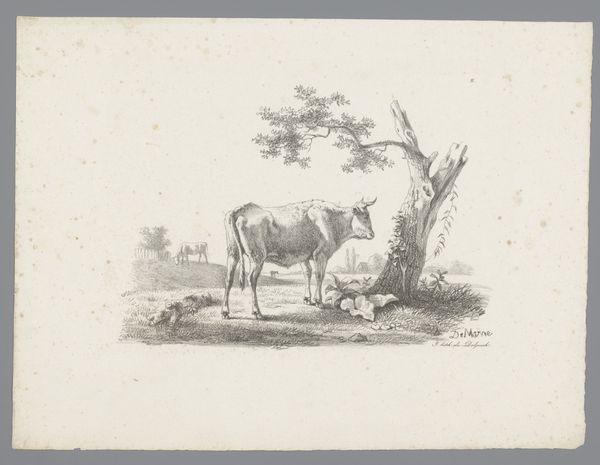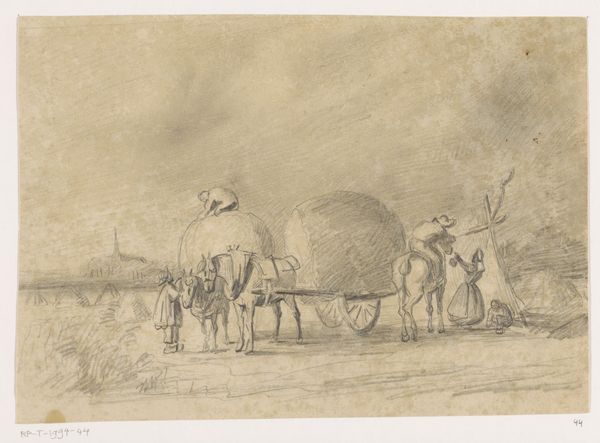
lithograph
#
lithograph
#
landscape
#
genre-painting
#
realism
Dimensions: height 211 mm, width 270 mm
Copyright: Rijks Museum: Open Domain
Curator: Here we have Hendrikus van de Sande Bakhuyzen's "Cows and Sheep in a Puddle", created sometime between 1847 and 1860. What's your initial take on it? Editor: There’s a pastoral stillness to it; almost an uncanny calmness in the rendering of rural life. The monochromatic palette, of course, amplifies that quietude. Curator: Precisely. The work is a lithograph. Look at how Bakhuyzen modulates the tonal values. See how he crafts the gradations in light and shadow across the bodies of the animals and their reflections? Editor: The cows and sheep gathered together, paddling in the shallow water, evoke for me the universal struggle to maintain peace during upheaval. Animal husbandry in nineteenth-century Netherlands wasn't disconnected from the major issues of the time: land rights, environmental anxieties, even proto-feminist issues when understood through an ecofeminist lens. Curator: An interesting angle. What strikes me is the work's inherent realism; observe the artist's treatment of surface textures: the shaggy wool, the smooth hides, the rough foliage on the periphery. Notice also, in terms of the arrangement of pictorial space, how the livestock are massed in the immediate foreground to generate a sensation of intimate proximity, whereas in the distance human and animal figures are scaled down and lightly sketched. The eye registers an asymmetrical balance across the composition. Editor: Agreed. The decision to foreground these particular animals over the humans aligns with an anti-speciesist agenda as well. It questions human centrality by emphasizing non-human agency. We must question whether we're observing an unadulterated view of the landscape or the artist's intervention and bias. Curator: While I understand the desire to draw parallels with current debates, the artwork is mostly a formal, artistic expression of his time. Editor: But formalism, even at its most intrinsic, can also function as an assertion of specific ideology. Bakhuyzen is subtly questioning humanity's place in the larger social framework of existence. Curator: It’s been a thought-provoking exchange, especially in relation to this piece. Editor: Indeed; hopefully we’ve invited new ways of seeing, engaging with not just this artwork, but also how art can instigate critical thought.
Comments
No comments
Be the first to comment and join the conversation on the ultimate creative platform.

